My day began on a bright and sunny morning in Tuolumne meadows without a partner. I had prevoiusly arranged to spend the day climbing with a user on mountain project, but when I met him he was on his way out to do laundry in Lee Vining. This was undesirable yet understandable, given he was living and climbing in the meadows for 2 months. Upon hearing this, I started scanning the Tuolumne Meadows general store parking lot for other potential partners.
After about a half hour sitting in the back of my van reading a book with my climbing gear visible, I spied a potential candidate. Approach shoes? Check. Nice bed in the back of his car? Check. Build of a climber? Check. He also had a settlers of catan bumper sticker, an unambiguous sign of good taste. His name was Jack, and to no one’s surprise, he was also up in the meadows on a climbing trip. He couldn’t find his friends he was supposed to do Matthes Crest with, so we didn’t waste any time taking off to go climb somewhere else.
Our first objective was West Crack on Daff dome, which is a classic 5.8 route that ascends a splitter crack up the side of the dome over 4 pitches. After the first pitch it was clear Jack was a great partner. We worked very well together, climbed around the same level (Jack was clearly the superior climber), and were both stoked to climb all day. We made quick work of West Crack, and afterwards wanted something a little more substantial. Staring us in the face was Fairview dome, and what better route to attempt than the most famous one leading directly up its prow? When I mentioned that the regular route was in the famous list of 50 classic climbs, Jack got especially psyched to give it a go. It was 1pm, there were no clouds in the sky, no chance of thunderstorms, and we were ready to send.
We got to the base of the climb around 2 or so. I took the first pitch, which is the crux of the whole climb. It started with 75 feet of easy climbing, then as the dome curved up it got steadily harder, until the crux about 150 feet up which is a slippery 5.9 fingercrack in a corner. I put in a prolific amount of pro and managed to make it clean to the belay. We had a 70 meter rope, which allowed me to make it to a spacious ledge with a tree to anchor to. I highly recommend getting to this ledge any way possible to end the first pitch, even if you have to simulclimb on a 60 meter. All of the other belay spots below are marginal.
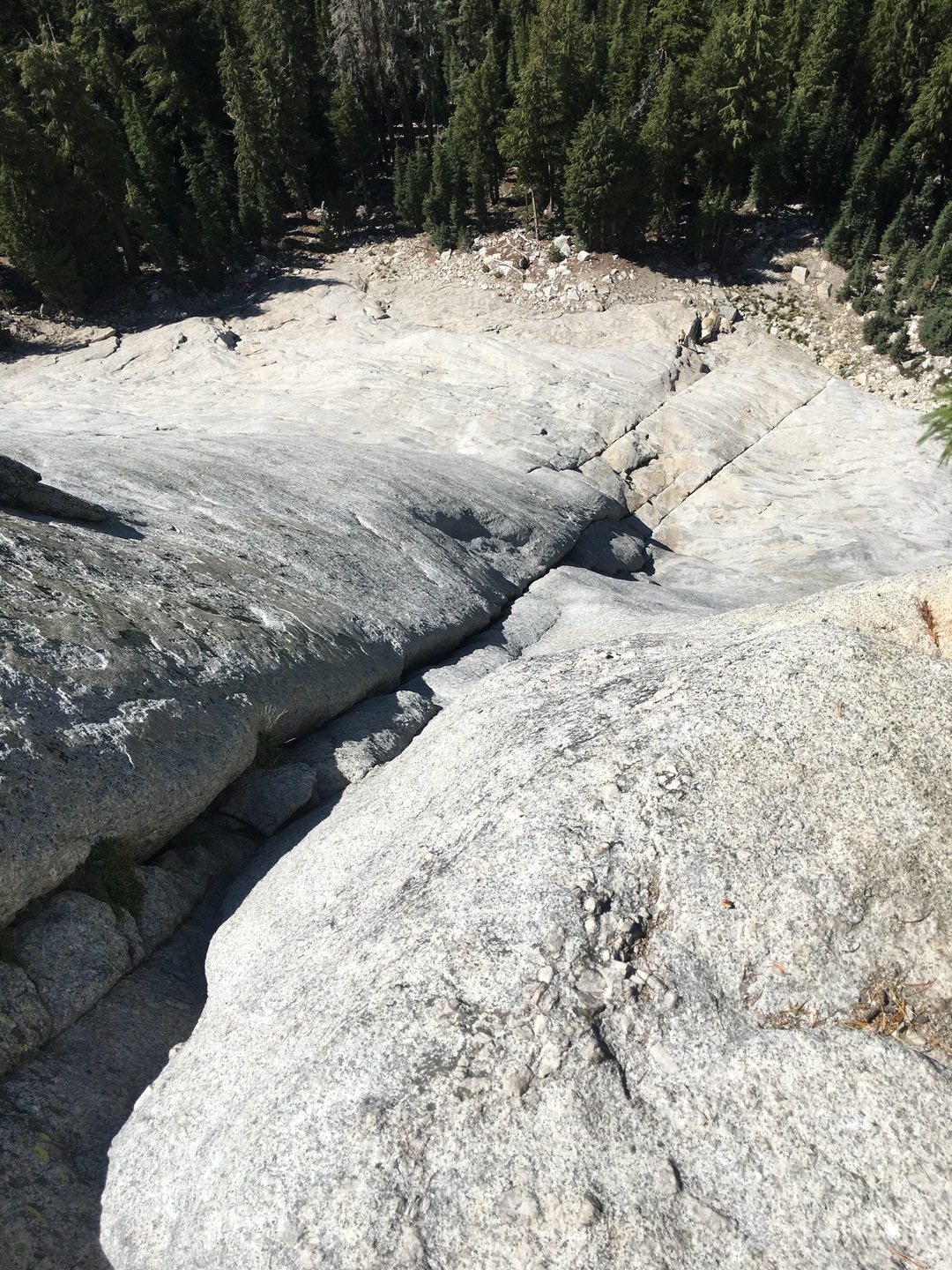 Looking down on the first pitch. The crux was right below the bright part of
the crack
Looking down on the first pitch. The crux was right below the bright part of
the crack
We swung leads the whole climb, so Jack took pitch 2 while I enjoyed the view. The majority of pitch 2 was an awesome flaring hand crack. It was rated 5.8, but it was surprisingly sustained. I was starting to get a little fatigued, but the climbing was just moderate enough and too damn fun to get tired.
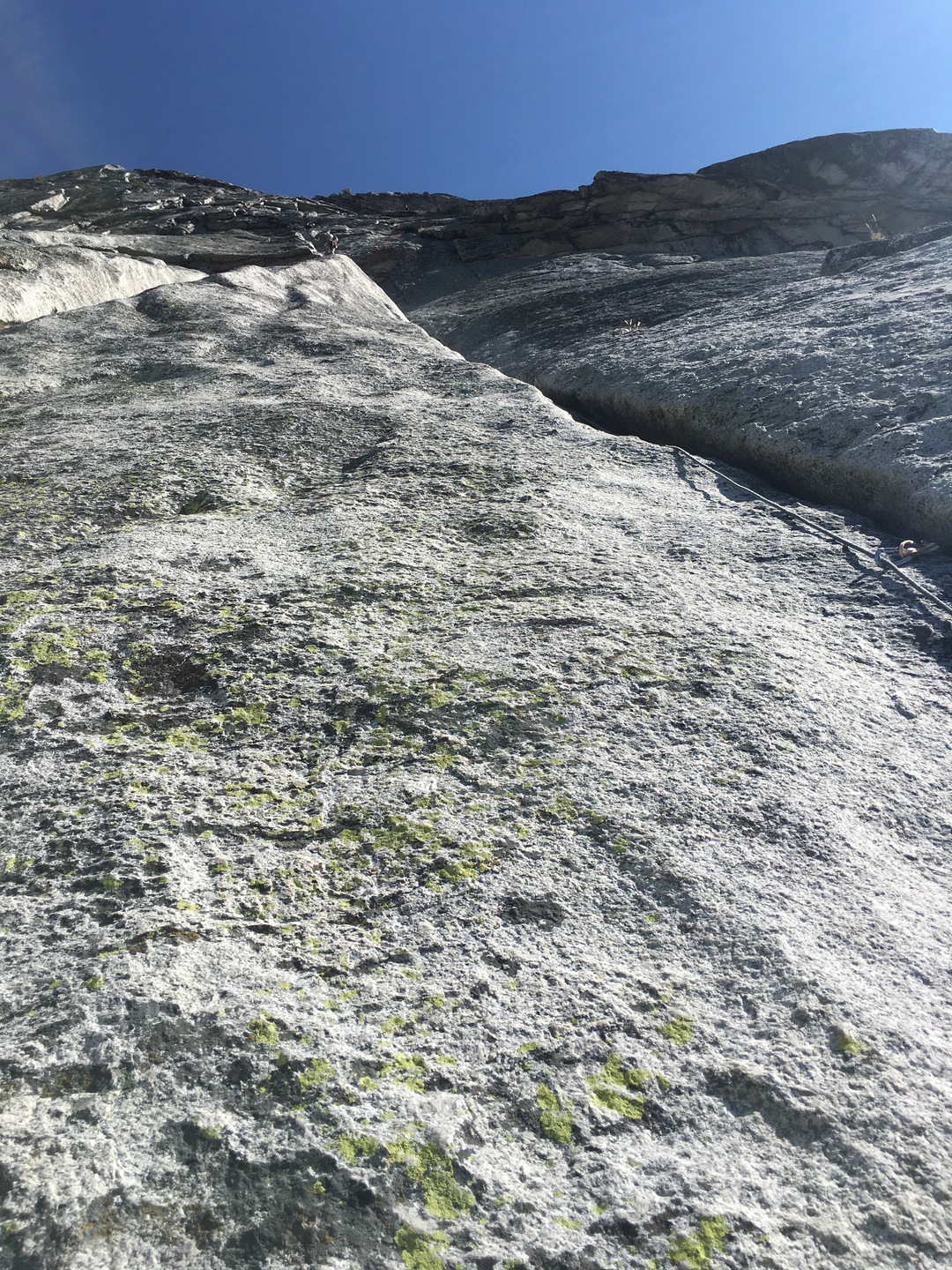 Looking up pitch 2. The rope disappears up the corner and the pitch eventually
makes its way to a ledge on the left
Looking up pitch 2. The rope disappears up the corner and the pitch eventually
makes its way to a ledge on the left
The third pitch wasn’t as obvious as the first two. I ended up meandering up a system of cracks and knobby faces to crescent ledge, a large ledged shaped like (you guessed it!) a crescent. Despite this pitch being a “choose your own adventure to crescent ledge” style climb, it still was quite good. Jack did a little variation up a crack in a roof that he was quite psyched on. It should be noted that we ended up doing 4 guidebook pitches in 3 actual pitches with a 70 meter. They were easy to link.
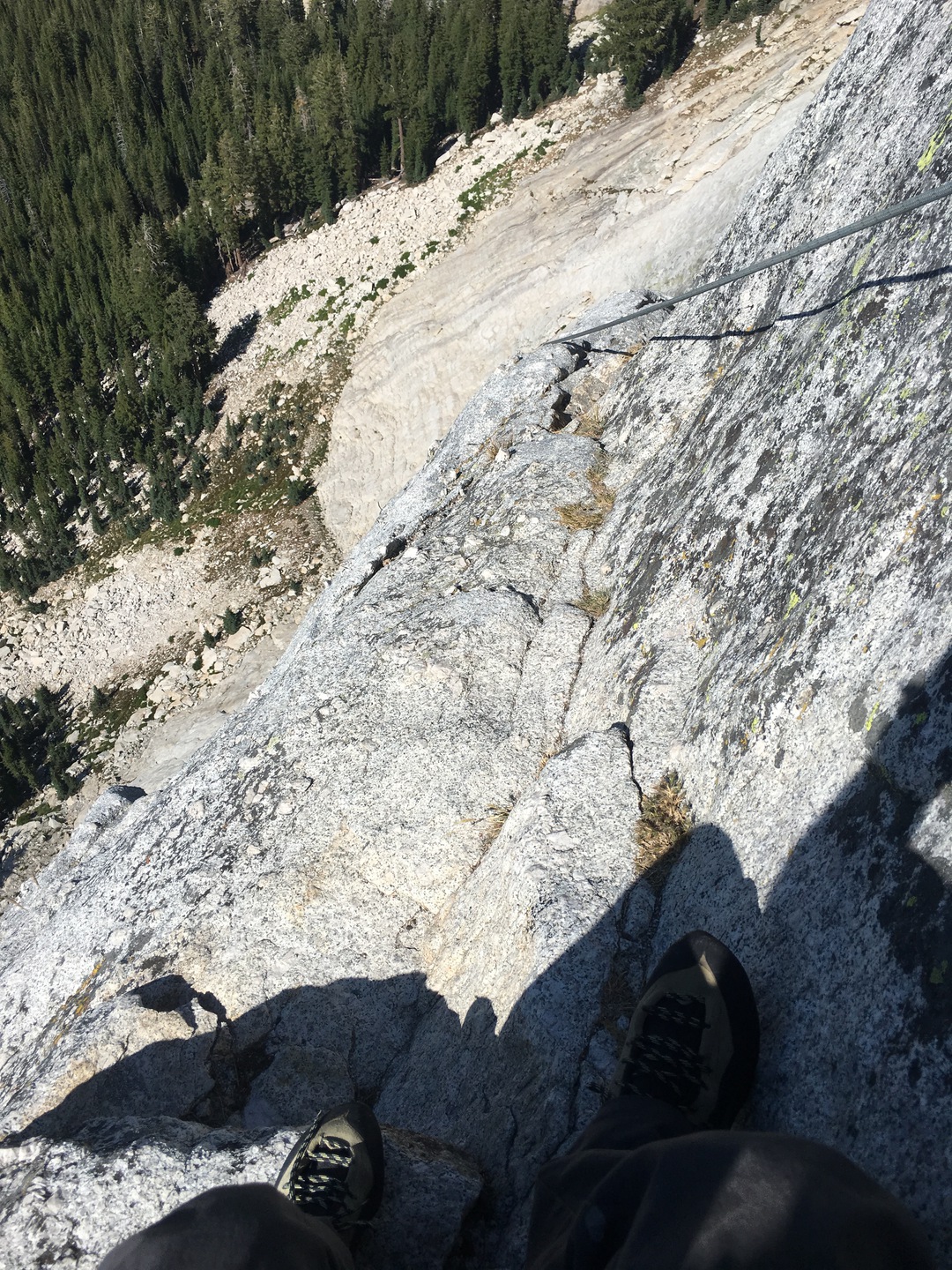 Looking down on the very end of pitch 3 from the start of crescent ledge.
Looking down on the very end of pitch 3 from the start of crescent ledge.
 Great spot to eat an energy bar or 3!
Great spot to eat an energy bar or 3!
We took a little break to devour some clif bars and let our toes rest from hours of climbing, then started up pitch 4. This pitch was easy to forget, mainly because it was about 120 feet of easy climbing up crescent ledge. My feet weren’t happy to be back in climbing shoes, either.
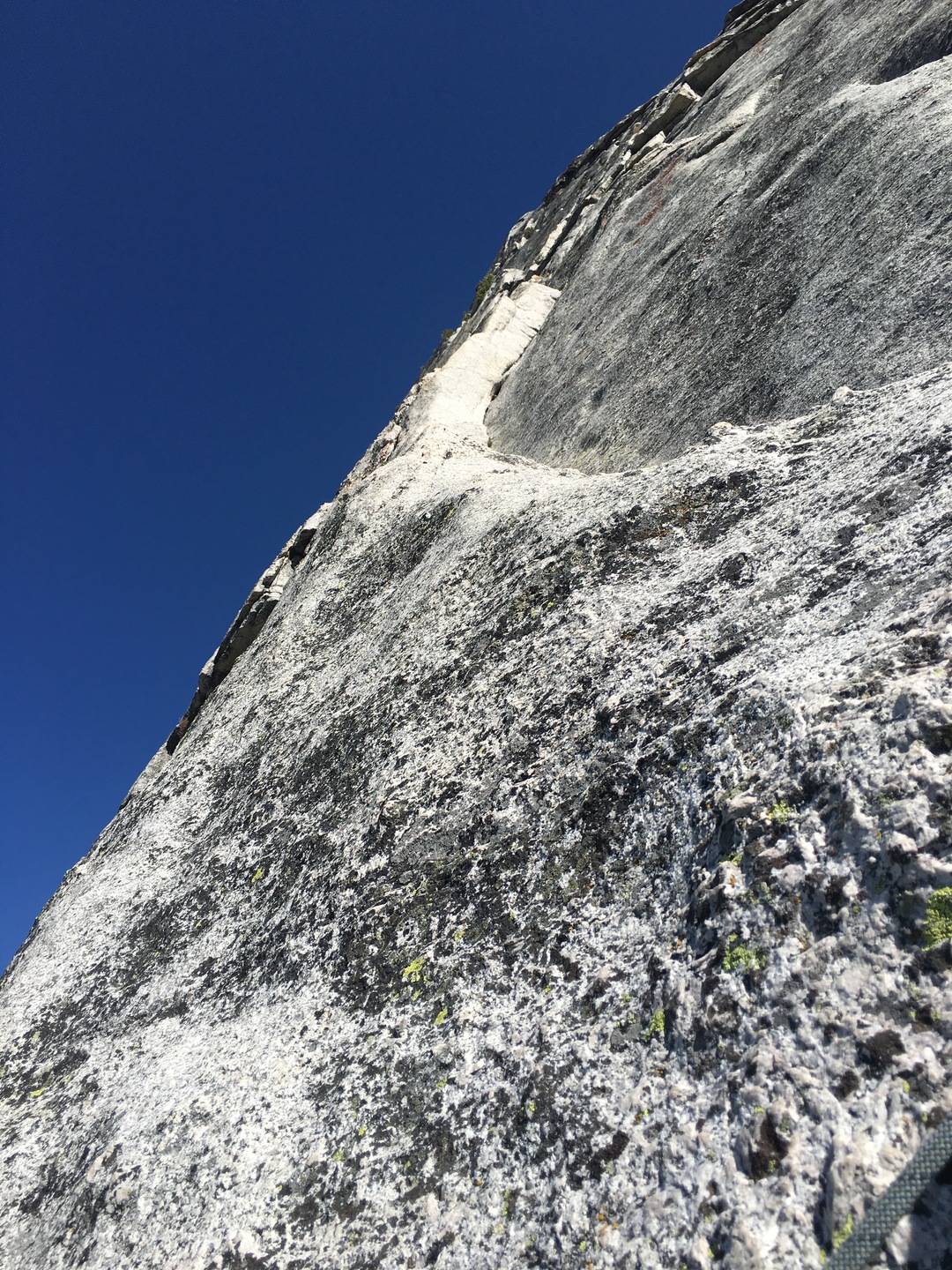 Crescent ledge really is a crescent. P4 goes right up the ledge/corner
Crescent ledge really is a crescent. P4 goes right up the ledge/corner
I took pitch 5, which was a link-up of pitch 6 and 7 in the guidebook. The first half of the pitch was awesome climbing. I went up a corner into a crack system that goes straight up a roof with an old piton. The rest of the pitch wandered up a ledge system. I eventually set a belay at the top of a smaller ledge close to easier terrain.
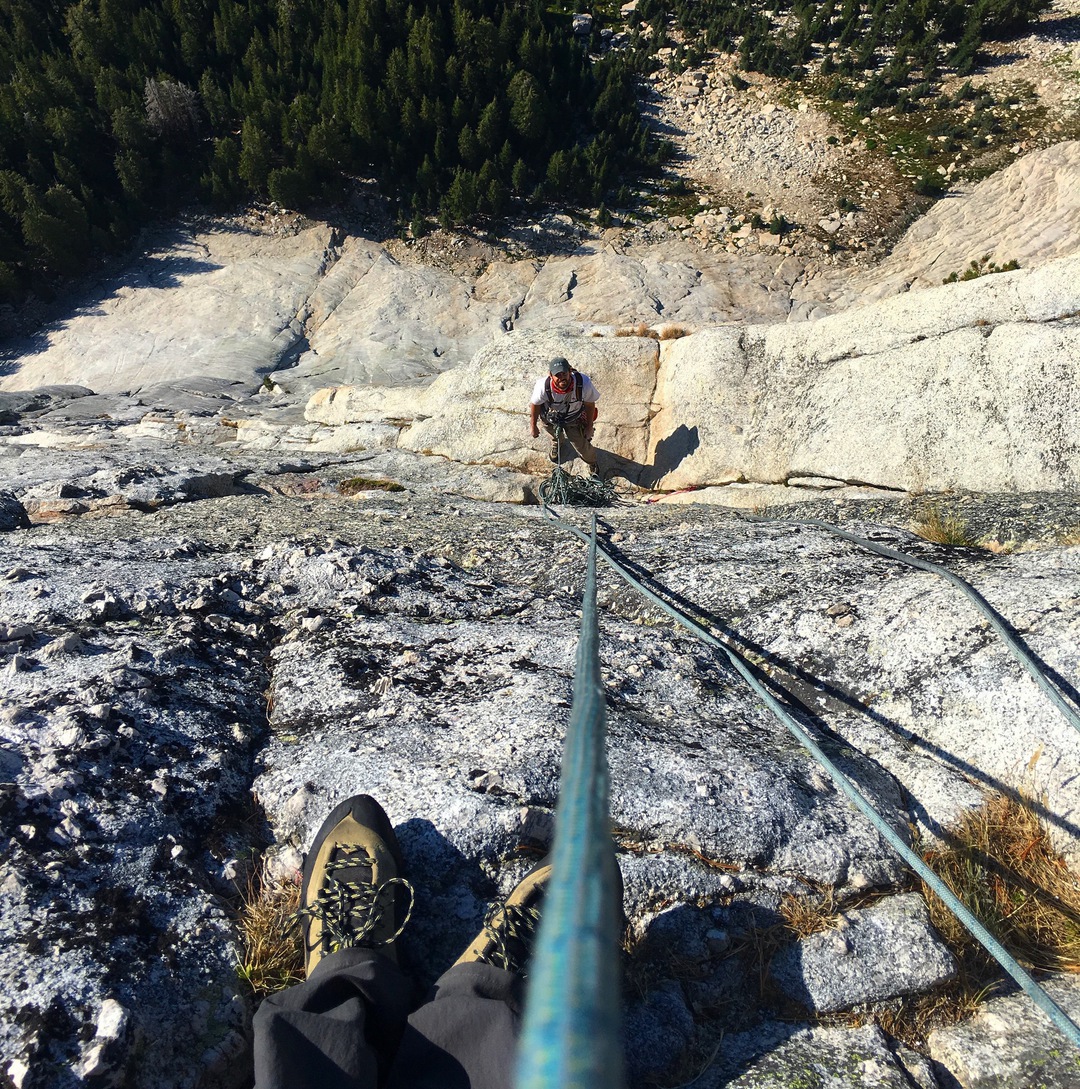 The view from the P6 belay, looking down on the second half of the pitch. Jack
is undoubtedly wondering how I managed to get so horrible at rope management.
The view from the P6 belay, looking down on the second half of the pitch. Jack
is undoubtedly wondering how I managed to get so horrible at rope management.
Jack lead one more easy pitch that traversed back right to the bottom of a big stretch of 3rd and 4th class terrain. At this point the guidebook showed 5 more pitches of extremely easy climbing with occasional 5.5 sections, so we decided to simul-climb the rest of it. We folded the rope in half, I took all the gear, and I set off with Jack belaying and eventually following. We made it to the summit about 30 minutes later after walking up the majority of the last stretch.
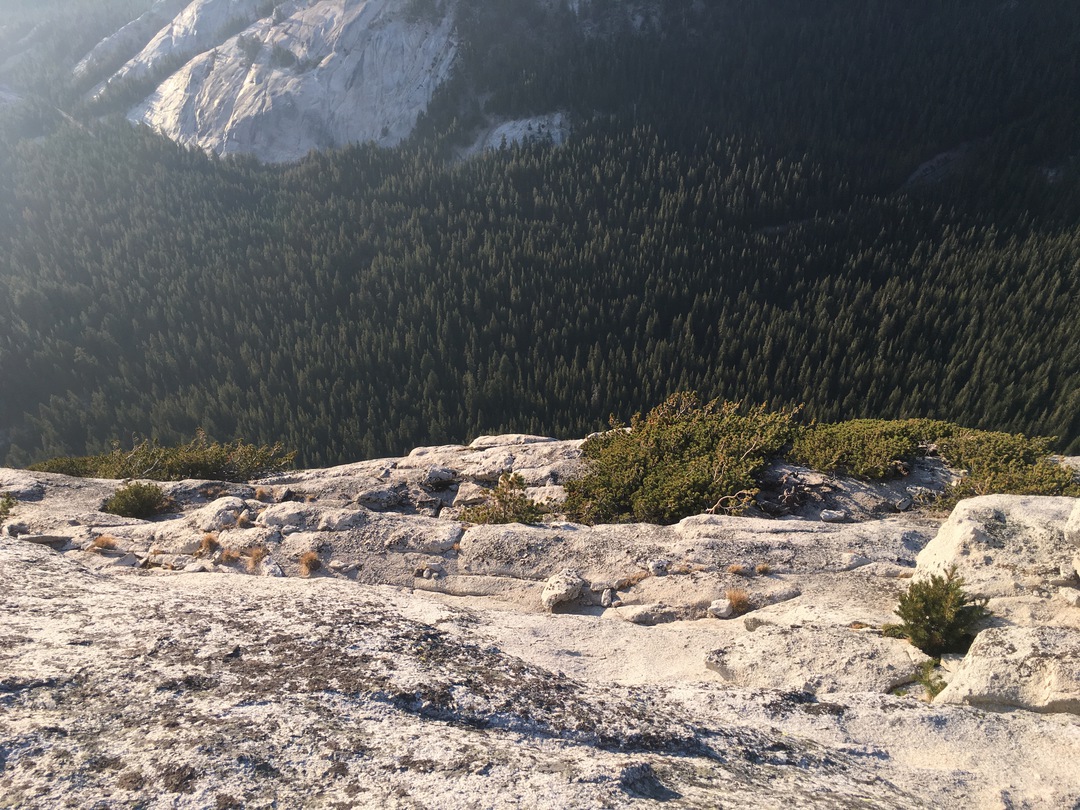 Looking down on the ledges we simul-climbed
Looking down on the ledges we simul-climbed
We summitted around 6:50, just in time to savor the incredible view all around us. We walked off in the dusk and made it back to the cars around 7:50. We were both exhausted yet giddy that a non-day of climbing turned into a worthy epic, ascending over 1600 feet and one of the best routes around.
 Looking east towards the meadows. The picture doesn’t really do it justice
Looking east towards the meadows. The picture doesn’t really do it justice